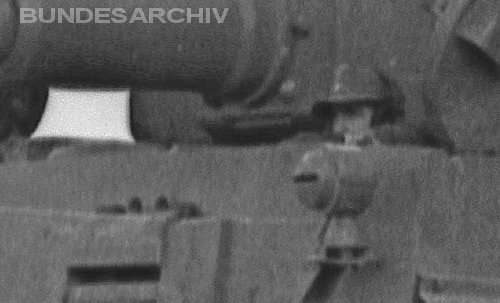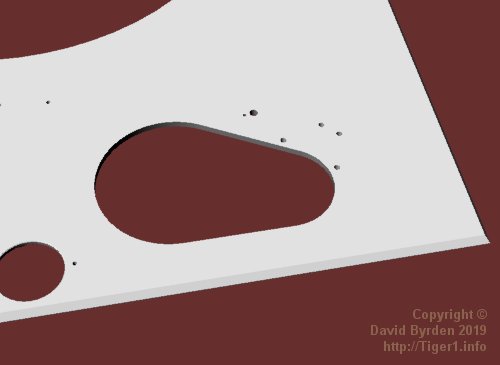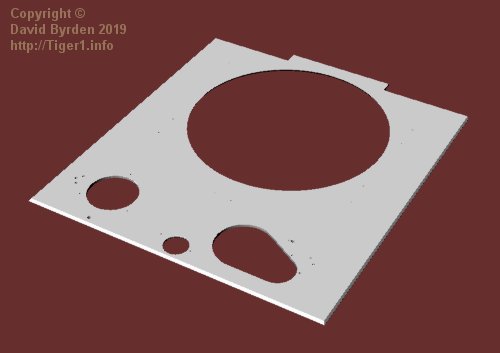The Tiger's hull had two crew hatches in the forward roof. These hatches had significant defects; firstly, they were not directly over each crewman, but were off to his side; and secondly, each hatch could be blocked from opening if the tank's main gun happened to be above it.

The first defect was of most concern to the driver. Photographs suggest that some Tiger drivers would contort themselves in order to hold their head out of their hatch while driving. Exactly how they could reach the controls from this position, is not recorded.
A surviving German drawing suggests that a new design of hatch was proposed in the spring of 1943.

This is a CAD model of the hull roof, exactly as specified in the drawing. The hole for the driver's hatch is shown. It's directly above the driver's seat, and it obviously has a hinge mechanism (under the four bolt holes) that will allow it to be raised and rotated, rather like the later type of commander's hatch. A hole in the hull roof behind it is probably for a lock. The opening in front of the hatch, for the headlight wiring, has been deleted.

We could guess that the new hatch was intended to address the defects of the old hatch, but the German drawing suggests otherwise. It specifies the new type of hatch for the driver, but it retains the original round hatch on the other side. Why would the driver get special treatment?
When this drawing was made, the Tiger B was being designed. That tank has a driver's seat that can be raised, allowing the driver to sit comfortably with his head fully outside the hatch. Was there a proposal to provide a similar seat for the Tiger E? This would explain why a new hatch was needed for its driver but not for its radio operator.
Neither this new hatch design nor a new driver's seat were ever used on production Tigers. We have no other evidence of this hatch proposal. The Tiger continued to use the old round hatches until the end of production.